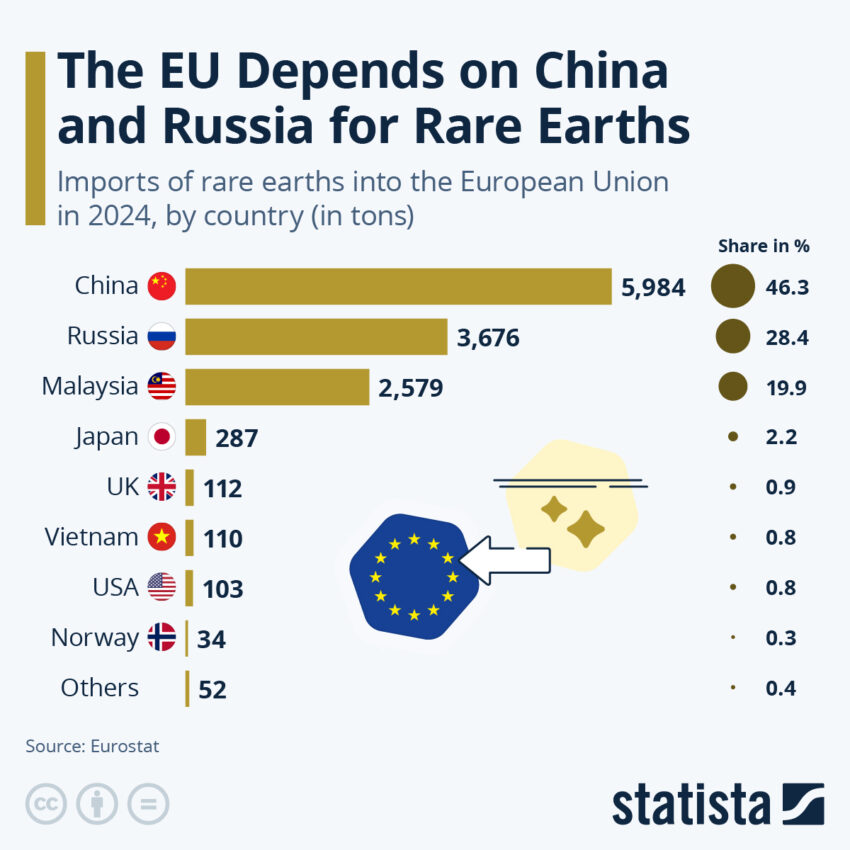Almost half of the European Union’s imports of rare earths came from China last year, according to the latest data from the European Union’s statistical office (Eurostat).
As Statista’s Anna Fleck shows in the chart below, Russia followed in second place with a share of around 29 percent, while Malaysia was in third at around 20 percent.
You will find more infographics at Statista
In order to reduce dependence on China and other individual countries, the EU passed the Critical Raw Materials Act 2024.
The aim is to extract 10 percent of rare earths in the EU itself and cover 15 percent of demand from recycling.
In addition, no single third country is to cover more than 65 percent of demand.
The 17 metals of the so-called rare earths are used in many of today’s key technologies.
Terbium is essential for the production of permanent magnets, important for wind turbine generators and electric vehicle motors. The rare earths cerium and lanthanum are also needed in the context of electromobility, for example, as components of catalytic converters as well as in hybrid vehicles’ batteries. Meanwhile, europium and yttrium are essential components of LED lamps and smartphone displays.
The rarity of these elements is based on the fact that they occur in the form of oxides in a variety of rocks, but their concentrated occurrence in commercially exploitable deposits is rather rare.
Tyler Durden
Fri, 07/18/2025 – 05:45
Click this link for the original source of this article.
Author: Tyler Durden
This content is courtesy of, and owned and copyrighted by, https://zerohedge.com and its author. This content is made available by use of the public RSS feed offered by the host site and is used for educational purposes only. If you are the author or represent the host site and would like this content removed now and in the future, please contact USSANews.com using the email address in the Contact page found in the website menu.








